The old town of Corfu was announced a UNESCO world heritage site in 2007. Tall Venetian buildings, maze-like narrow alleys – the so-called kantounia, beautiful churches, the Liston building with the elegant arcades and the cafeterias, various 19th-century buildings with the Palace of St. George and St. Michael standing out, the vast Spianada square, and two massive 16th century fortresses make this town a must-see site while in Corfu.
With its unique history and culture, Corfu Town is well worth visiting, as there are wonderful sights to explore. Besides its history and charming architecture, Corfu Old Town is brimming with shops featuring local traditional products, taverns and restaurants with Greek and delectable local cuisine, grill rooms and bakeries, patisseries with delicious sweets and freshly-made ice cream. The cozy cafés and little bars in the Old Town are a typical meeting point for locals and visitors alike, all year round, from early in the morning till late at night.
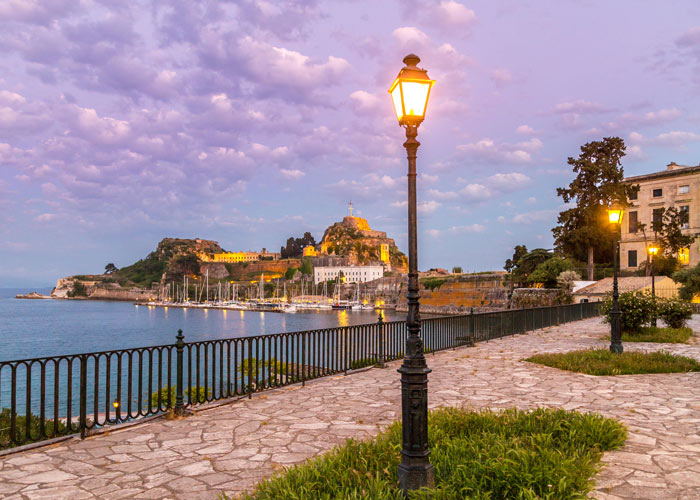
The Old Fortress (Fortezza Vecchia) is in the east side of the town and was built on a peninsula with two peaks. The first fortification works took place in the Byzantine era. In the 16th century, during Venetian occupation, the fortifications were enhanced in order to repulse the Ottomans. This fortress, along with the new one, belongs to the most important in Europe. A footpath goes up to the higher part of the fortress offering stunning views over the town of Corfu and the sea.
The church of Saint Spyridon is the most famous religious monument on the island. It was built in the 16th century in order to house the relics of Saint Spyridon, the saint patron of Corfu Island.
Mon Repos palace was built in the early 19th century as a summer residence for the British Lord High Commissioner of the Ionian Islands, Sir Frederick Adam. The palace is located at Palaiopolis, a small forest 4 km south of Corfu Town, where one can find the ruins of the ancient city of Corfu. For a long time, Mon Repos was used by the Greek Royal family as a summer residence. It is also the place where Prince Philip, Duke of Edinburgh was born. Elisabeth, Empress of Austria (Sissy), and Wilhelm II, Emperor of Germany, were hosted there for several days. Today, Mon Repos houses a small but really interesting Archeological Museum with exhibits from the ancient city, offering an overview of Corfu ancient history.
Kanoni peninsula is located south of Corfu Town and was the first settlement on the island. Kanoni is popular for its picturesque view to the Vlacherna Convent and to Pontikonissi, the landmark of Corfu. Vlacherna Convent can be reached from Kanoni via a narrow passage way, while the tiny, green island of Pontikonissi can be reached by boat. It’s a lovely place to explore, take photos and visit the chapel dedicated to Jesus Christ.
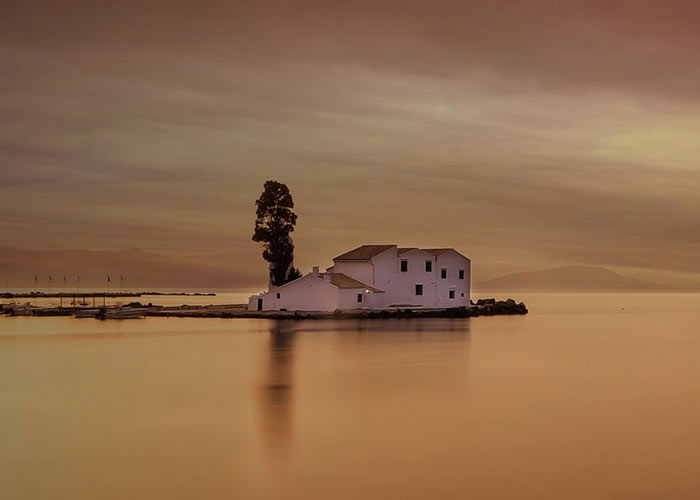
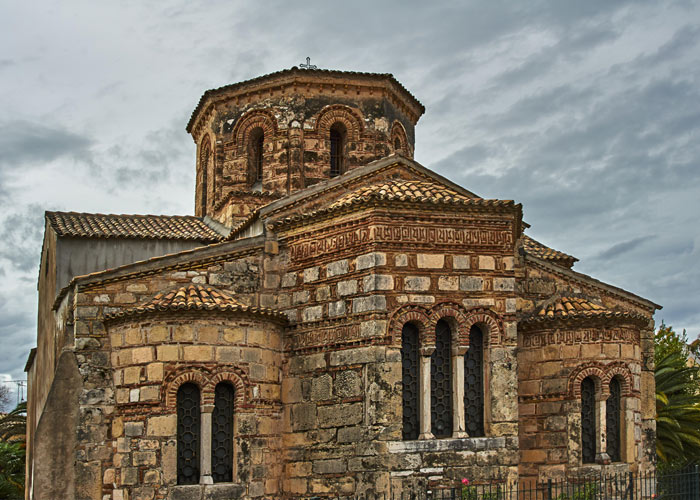
The church of Saints Jason and Sosipater is the most important monument of the mid-Byzantine period on Corfu Island. It dates back to 1000 AD and its dome was built of ancient ruins. The church is dedicated to Saints Jason and Sosipater, who visited Corfu in the 1st century AD and preached about Christianity.
Palaiokastritsa is a village located 25 km from Corfu town, at the north western coast of the island. It is one of the most scenic yet busiest resorts in Corfu. Green hills, steep cliffs, and bays with turquoise waters make this place one of the most beautiful spots on the island. It is believed that the city of the mythical island of the Phaeacians was situated somewhere in Palaiokastritsa.
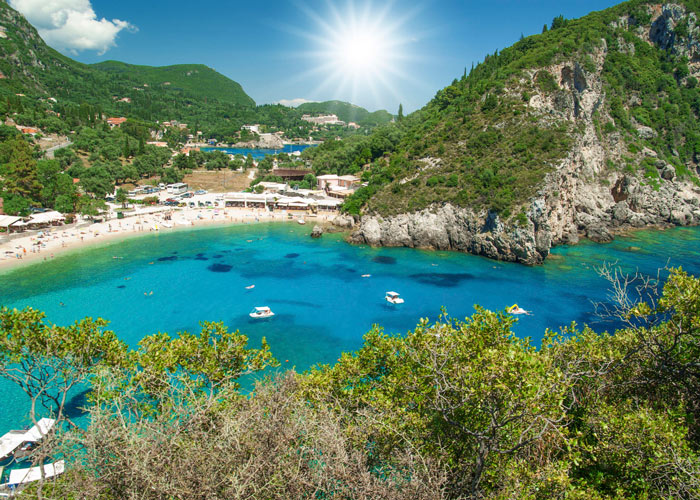
Achilleion Palace was built in the late 19th century and is located 11 km south of Corfu town. It was built on top of a hill by Elisabeth, Empress of Austria, known as Sissi. She named the palace Achilleion, after her favourite Greek hero Achilles. The statue of dying Achilles in the gardens is the landmark of the palace. Another statue of Achilles that decorates the gardens was set up by the second owner of the palace Kaiser Wilhelm II of Germany. This statue is of great dimensions and depicts victorious Achilles. In the gardens, there are many more statues inspired by ancient Greek mythology and history, which visitors can admire along with the panoramic views of Corfu town. After World War II, Achilleion was obtained by the Greek State and for about two decades it housed a casino where the James Bond film For Your Eyes Only was shot. Nowadays the property operates as a museum with memorials from both its former owners, Sissi and Kaiser Wilhelm II.
Epirus is one of North West Greece’s natural treasures, situated between the mountain range of Pindos and the Ionian Sea. Ferry boats frequently sail from the port of Igoumenitsa to Corfu island. The short sailing time and regular ferry service make Epirus a great escape for the islanders and visitors to Corfu.
Epirus is an ideal location for all kinds of alternative tourism. Its beautiful scenery includes charming seaside bays and harbours; untouched mountains;mountain lakes virgin forests; and a rich variety of fauna and flora. Alongside these natural beauties lie, in perfect harmony, castles, archaeological sites, monasteries, churches and traditional villages. Epirus is popular for dairy products like feta cheese, it’s delicious pies, and traditional sweet desserts. Epirus is a mythical place full of ancient Greek secrets waiting for you to discover.
Zagori is one of the most popular mountainous destinations in Greece. It has a rich history and culture; and both its architecture and unique natural landscape have been particularly well preserved over the years. Zagori comprises of 46 mountainous villages which are back-dropped by the imposing Vikos gorge. “Beyond the Mountain”, as its name indicates, rest tranquil villages with great views, and others that are nestled away deep in the forest. They sit aside rivers with crystal waters such as Voidomatis, mountain lakes and make up part of the National Park of Vikos-Aoos. Most settlements are traditional, with stone and wood being the dominating building materials for dwellings, bridges, monuments, monasteries and churches. Zagori is also a perfect destination for outdoor activities like hiking, rafting, canoeing kayaking, mountain biking and swimming.
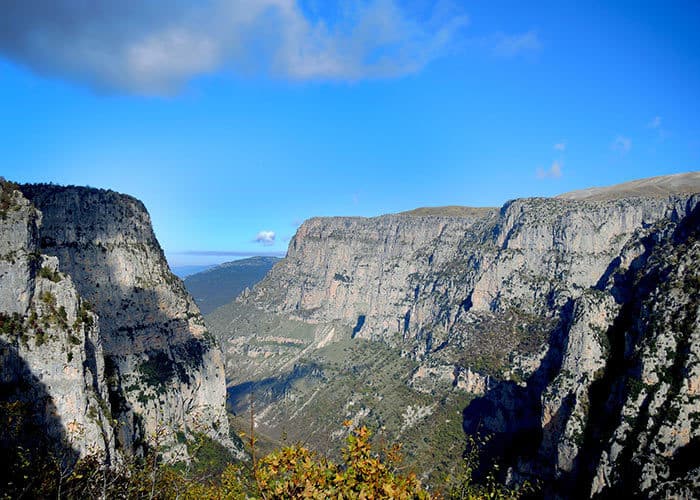
Built at an altitude of 500 meters, on the shores of Lake Pamvotida, Ioannina is the largest city of Epirus. It has a great tradition and history, offering every visitor the opportunity to see countless historical monuments and museums. Its outstanding natural beauty is something that is loved and appreciated by visitors, particularly by lovers of ecological tourism. The historical castle of Ioannina, the islet of Kyra Frosini and the cave of Perama are just a few of the must-see attractions of Ioannina. The castle of Ioannina is the oldest of all the Byzantine era castles. Its original purpose was to serve as a command centre and it was the largest one in all of Greece to be built during the period of Ali Pasha. The island of Ioannina is one of the few islands within a lake that is inhabited, and still stands the house of Ali Pasha. Another iconic characteristic of the island is its abundance of monasteries. The Cave of Perama, situated 4 km from the center of Ioannina, is one of the most sought-out caves in the world thanks to the wonderful natural beauty of the stalactite formations.
The Necromancy of Acheron is the first sanctuary and Oracle for the gods of the underworld. The ancient Greeks believed that spirits of the dead could predict the future and through contact with them they would receive answers to the questions no living person could answer. So, all class a creed of person would seek answers from the Necromancy. Even Odysseus came to the Necromancy to seek advice from the clairvoyant Tiresias for his return to Ithaca.
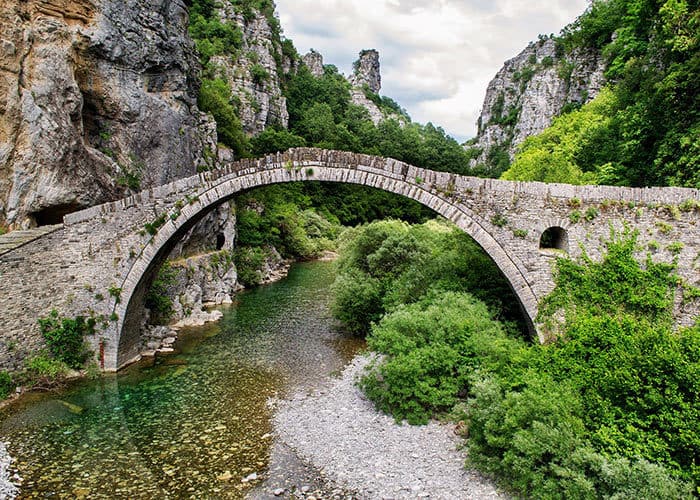
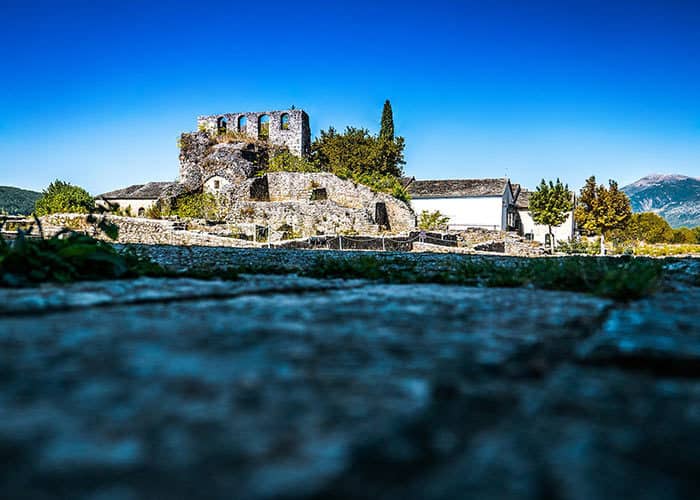
The oracle of Dodona is the oldest oracle in Greece and is located in Epirus. From the ancient historian Herodotus we know that the Greeks recognised this oracle as the oldest in the Greek region. It suits among beautiful landscape, housed in the Temple of Zeus with the sacred Oak was dominating the center of this sacred space. An integral part of the complex is its impressive theatre, which was built in the 3rd century before Christ.
